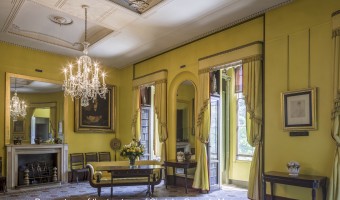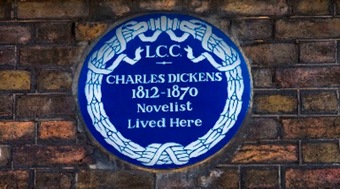Cultural Sanctuary in Holborn
The Histories
Lincoln’s Inn Field
Lincoln’s Inn Fields was designed by Inigo Jones, Charles I’s architect in the 1630s. Despite the peaceful scene of sunbathers, Lincoln’s Inn Fields belies a hidden past. In 1683, Lord William Russell was beheaded in the centre of the Square by an allegedly incompetent axeman. Lord Russell, convicted of plotting to kill King Charles II survived the first blow and shouted at the executioner, ‘You dog, did I give you 10 guineas to use me so inhumanely?’ It took another three blows to finish the job. All that remains is a tombstone under the central bandstand, which simply states that ‘near to this spot was beheaded Lord Russell…a lover of constitutional liberty’.
Anthony Babington, who plotted against Queen Elizabeth with Mary Queen of Scots also met a grisly end here: his private parts were removed and burned in front of him whilst still alive and conscious.
Lincoln’s Inn
The adjacent Lincoln’s Inn, the largest and oldest of the four remaining Inns of Court (originally one of over twenty) in London has records dating back to 1422 and was created when King Henry III split religious and ordinary law, prohibiting lawyers from practising within the City itself. The hamlet of Holborn was an ideal location, close to Westminster but outside the City so the Earl of Lincoln encouraged lawyers to move here.
The gardens of Lincoln’s Inn are staggeringly beautiful, particularly in the summer. It is hard to believe that you are in central London and one could be excused for day dreaming of being in an English village. The gardens, which comprise of over 11 perfectly manicured acres are open to the ‘well behaved’ public from 7am to 7pm. The spectacular Great Hall date back to Victorian times, whilst the breath taking Old Hall dates back to 1490, but access to these is by prior arrangement only. As you enter from Lincoln’s Inn Field, look to your right and you can see the Royal Courts of Justice in the distance, which houses the English High Court and Court of Appeal.
The Museums
Sir John Soane
Tucked away behind the unremarkable façade of No 13 Lincoln’s Inn Fields lies a treasure trove of unique objects, each with a fascinating story of its own. Sir John Soane’s museum was once home to the famous architect and now houses his extensive collection of paintings, sculptures and antiquities.
While the collection may seem like an eclectic and cluttered mix of gothic and classical, every single item is arranged exactly as Sir John directed in a Bill of Parliament he obtained to keep the museum open and free for visitors forever. The highlights of this quirky museum include the sarcophagus of Ancient Egyptian pharaoh Seti (father of Ramses the Great) and Canaletto’s paintings of Venice. Open Tuesday to Saturday 10 am to 5 pm.
The Hunterian Museum
Opposite on the other side of the square is an equally splendid and unique museum. Located within the Royal College of Surgeons is the Hunterian Museum. The Museum houses amongst others, the collection of John Hunter, a skilled surgeon and anatomist whose unrivalled collection of over 15,000 specimens was fortunately purchased by the UK government in 1799 and bequeathed to the Royal College of Surgeons, some of which is on display.
From foetuses to hernias, you will find items you have never previously seen. Sir Winston Churchill’s dentures are on display, which were commissioned to maximise his elocution. One of the greatest speeches of the 20th century; ‘We shall fight on the beaches….we will never surrender’ is likely to have been delivered in 1940 using these dentures.
The Museum is free, but definitely not for the squeamish…a TV shows open surgery. But adventurous and inquisitive children will find it hard to leave. Open Tuesday to Saturday 10 am to 5 pm.
Nearby
The world famous London School of Economics and Political Studies (LSE) whose alumni include 35 past and present Heads of State boarders the Square; they have also purchased the handsome red brick ex-Land Registry building towards Lincoln's Inn.
A short walk east will take you to Chancery Lane, a quirky little street full of law firms and cafes, which was built by the legendary Knights Templar for easy access to Temple Church. During WW 2, the street suffered heavy bombing wiping out the London Silver Vaults building. The Silver vaults themselves, which have 1.2m thick steel walls were remarkably undamaged. Also nearby is Fleet Street – famous for its newspapers.
One particularly interesting building is Ye Olde Cock Tavern, a pub that dates back to 1549 and was visited by important literary figures such as Pepys, Tennyson and Dickens. Opposite you will find Temple Church, home of the Knights Templar, which was made popularised by the movie The Da Vinci Code. One of only four round churches in England (modelled on Solomon’s temple in Jerusalem), it features stunning vaulted ceilings and effigies of medieval kings and some of the great warrior-monks themselves.
Similarly, other great cultural treasures within a 10 minute walk include the British Museum, Charles Dickens Museum, Smithfield Market and the Museum of London to name just a few.
Where to Stay
With plenty of fascinating attractions and wonderful outdoor spaces, both families and cultural seekers are well catered. This truly is a gem in central London away from the hustle and bustle. Allow a full day to do justice to Lincoln’s Inn, longer if you are covering attractions nearby.
There are two well positioned luxury hotels, the Rosewood directly behind Lincoln’s Inn Field and CQ Club Quarters on the actual square, which would be excellent ‘base camps’. But don't forget to avoid Mondays as both museums are closed!
The square is a 2 minute walk from Holborn tube (central line), but avoid at peak hours as it gets very crowed with fast moving commuters. Nearby Chancery Lane is a better choice as you can navigate through the delightful Lincoln's Inn.


 Lincoln's Inn
Lincoln's Inn




 Load more triptoids
Load more triptoids